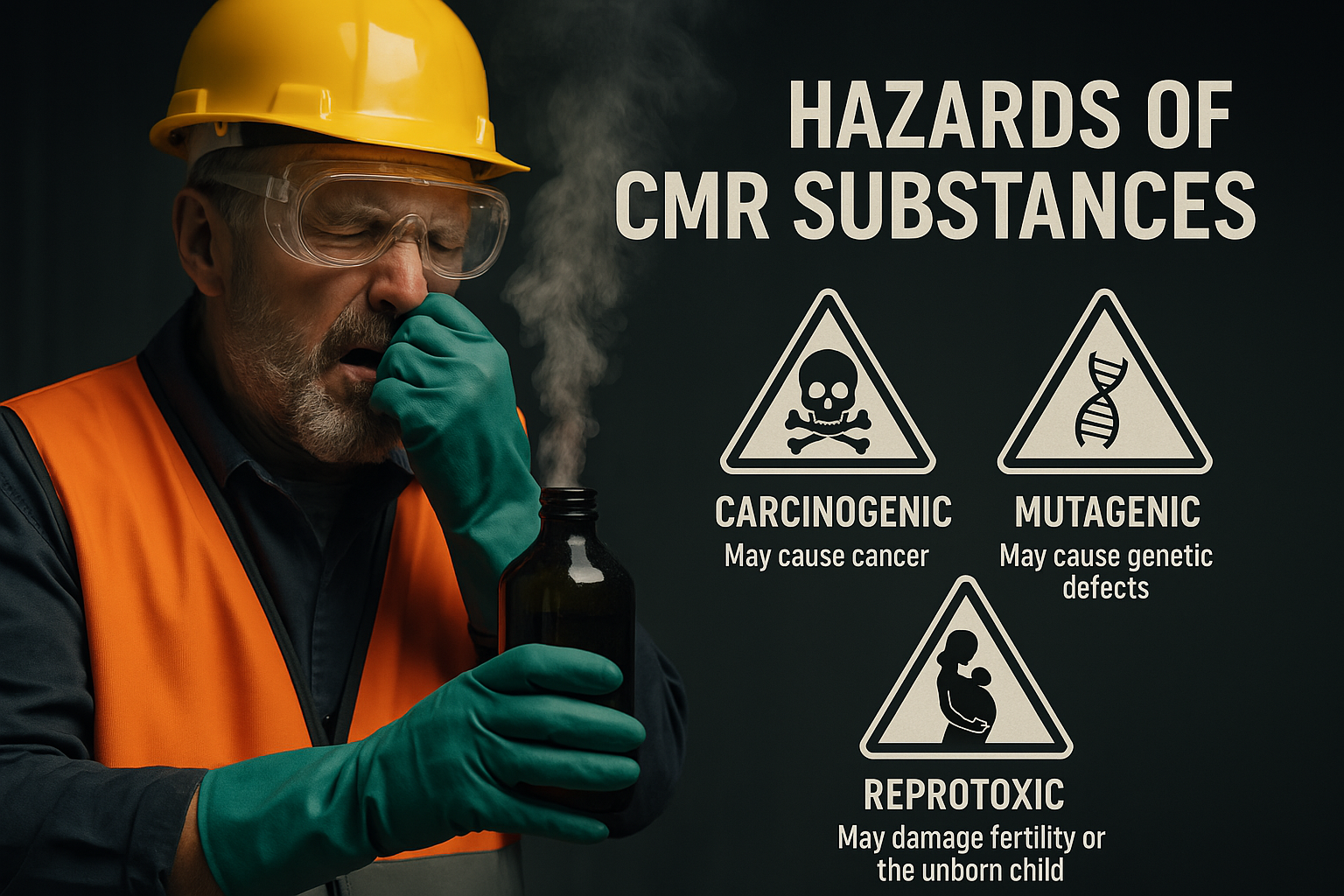Carcinogenic, Mutagenic, and Reprotoxic Substances (CMR): EU Legislation, Regulation, and Industrial Use
Carcinogenic, mutagenic, and reprotoxic (CMR) substances pose significant risks to human health. These chemical compounds can cause cancer, induce genetic mutations, or impair reproductive functions when absorbed into the body through inhalation, skin contact, or ingestion. Within the European Union, the use, handling, and labeling of CMR substances are strictly regulated to ensure worker safety and public health.
Definition and Classification of CMR Substances
CMR substances are classified under the CLP Regulation (EC No 1272/2008), which aligns with the Globally Harmonized System (GHS). They fall into three primary hazard categories:
- Carcinogens: These are substances that cause or promote the development of cancer.
- Mutagens: These agents induce heritable genetic mutations, meaning changes to the DNA that can be passed on to future generations.
- Reprotoxic substances: These chemicals negatively affect fertility, sexual function, or the development of the fetus, potentially leading to birth defects or developmental problems.
Each category is further divided to reflect the strength of scientific evidence:
- Category 1A: Known human hazard (based on robust human evidence).
- Category 1B: Presumed human hazard (based on strong evidence from animal studies, with a reasonable expectation of similar effects in humans).
- Category 2: Suspected human hazard (based on some evidence from human or animal studies, but not strong enough for Category 1).
EU Legislation and Regulatory Framework: Managing CMR Risks
The EU has established a comprehensive legal framework to manage the risks associated with CMR substances:
- REACH Regulation (EC No 1907/2006): This cornerstone regulation requires the registration, evaluation, and authorization of CMR substances. Substances classified as CMR Category 1A or 1B are particularly subject to authorization or restriction under Annex XVII, aiming to replace them with safer alternatives where possible.
- CLP Regulation (EC No 1272/2008): This regulation governs the classification, labeling, and packaging of substances and mixtures. CMR substances must be clearly labeled with specific hazard pictogram (e.g., the health hazard pictogram), signal words, and standardized hazard statements (H-statements) to ensure clear risk communication.
- Directive 2004/37/EC (as amended): This directive focuses specifically on the protection of workers from exposure to carcinogens, mutagens, and reprotoxic substances at the workplace. Employers are mandated to:
- Assess exposure risks.
- Substitute hazardous substances with less dangerous alternatives when technically possible.
- Implement closed systems or minimize exposure through engineering controls.
- Provide appropriate personal protective equipment (PPE) and regular health surveillance.
- Cosmetics Regulation (EC No 1223/2009): This regulation prohibits the use of CMR substances in cosmetic products unless specific exemptions are granted under strict conditions. Recent updates, like EU 2024/197 (ATP 21), further expand this ban, with several newly classified CMRs prohibited in cosmetics starting September 1, 2025.
Industrial Applications: Balancing Utility and Safety
Despite their inherent hazards, CMR substances are still used in various industrial sectors due to their unique properties or functional advantages:
- Petrochemical and paint industries: Examples include benzene (a solvent) and formaldehyde (a chemical intermediate), both classified as carcinogens.
- Metal processing: Compounds like chromium VI and nickel compounds are used in plating, welding, and other processes, known for their carcinogenic potential.
- Plastic manufacturing: Certain phthalates, used as plasticizers, are classified as reprotoxic.
- Laboratories and research: Mutagenic agents, such as ethidium bromide, are used in molecular biology for DNA analysis.
While their use is often considered essential for performance or functionality in specific applications, it necessitates strict controls. Employers must implement robust engineering controls (e.g., closed systems, local exhaust ventilation), provide adequate ventilation systems, ensure proper storage in sealed containers, and establish safe waste disposal practices to minimize worker exposure and environmental release.

Conclusion: A Commitment to Safety and Compliance
CMR substances are tightly regulated across the EU due to their serious, long-term health risks. For industries that rely on these chemicals, strict compliance with regulations like REACH, CLP, and occupational safety directives is not just a legal obligation but a paramount commitment to worker safety and public health. Employers must prioritize the substitution of CMRs with safer alternatives, conduct thorough risk assessments, and implement robust worker protection measures to maintain a safe, legally compliant, and ethical operating environment. Ensuring the responsible management of CMR substances is crucial for a healthier future.